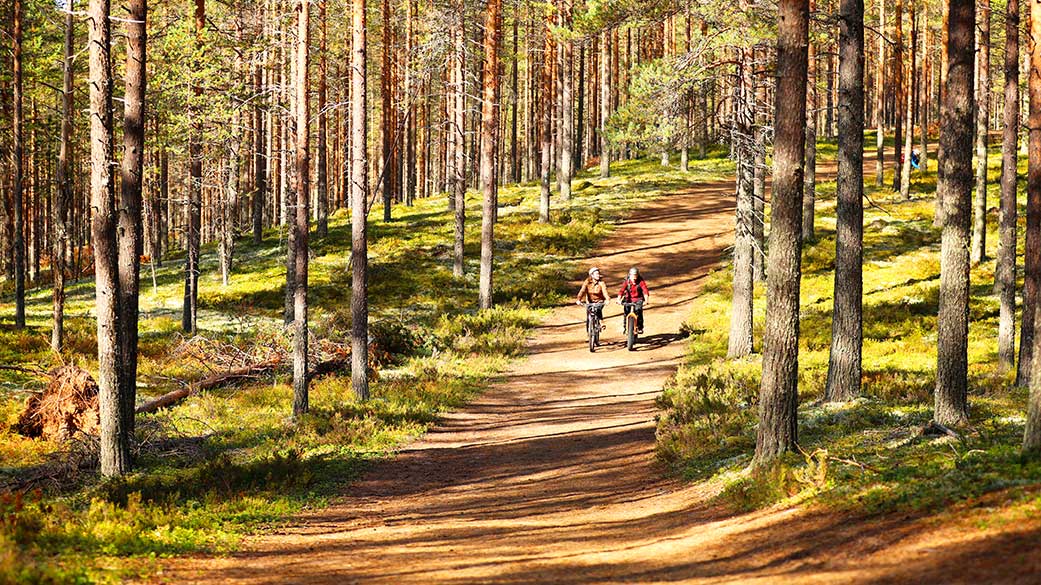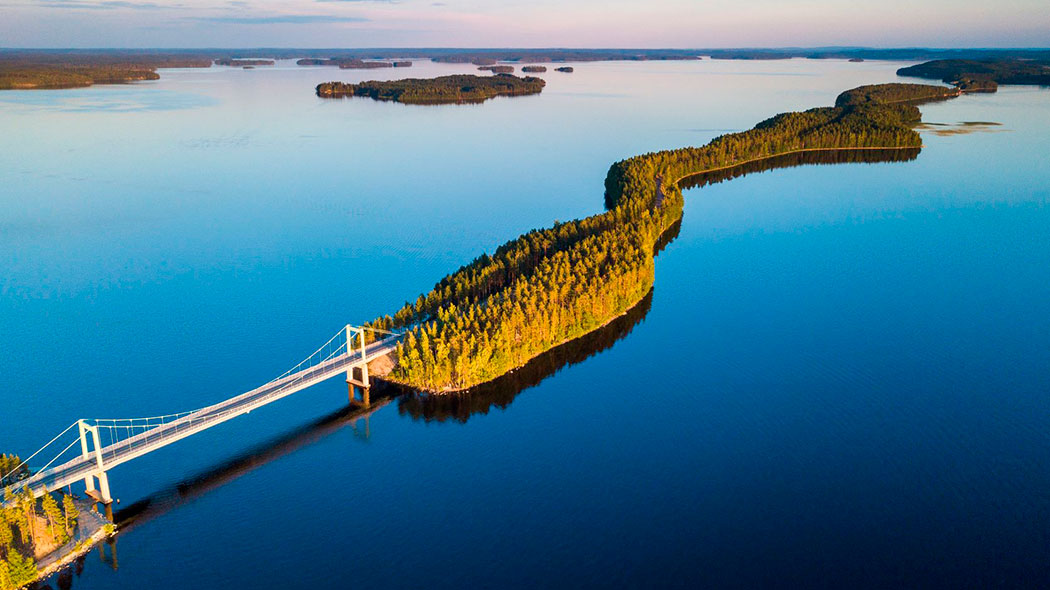- Top Natural Attractions
-
National Parks
- Archipelago
- Bothnian Bay
- Bothnian Sea
- Ekenäs Archipelago
- Gulf of Finland
- Helvetinjärvi
- Hiidenportti
- Hossa
- Isojärvi
- Kauhaneva-Pohjankangas
- Koli
- Kolovesi
- Kurjenrahka
- Lauhanvuori
- Leivonmäki
- Lemmenjoki
- Liesjärvi
- Linnansaari
- Nuuksio
- Oulanka
- Pallas-Yllästunturi
- Patvinsuo
- Petkeljärvi
- Puurijärvi and Isosuo
- Pyhä-Häkki
- Pyhä-Luosto
- Päijänne
- Repovesi
- Riisitunturi
- Rokua
- Salla
- Salamajärvi
- Seitseminen
- Sipoonkorpi
- Southern Konnevesi
- Syöte
- Teijo
- Tiilikkajärvi
- Torronsuo
- Urho Kekkonen National Park
- Valkmusa
- World Heritage Sites
- National Hiking Areas
- Wilderness Areas
-
Other Nature Sites
- Aulanko
- Auttiköngäs
- Dagmar Park
- Friendship Park
- Hepoköngäs
- Hetta Area
- Hämeenkangas
- Iivaara
- Ilmakkiaapa
- Kairijoki
- Kevo
- Kivitunturi
- Korouoma
- Laajalahti
- Langinkoski
- Luiro Mires
- Malla
- Martimoaapa
- Meiko
- Neitvuori-Luonteri
- Näränkä
- Porkkala
- Punkaharju
- Rahja
- Sanginjoki
- Siikalahti Nature Reserve
- Simojärvi and Soppana
- Sompio
- Teuravuoma - Kivijärvenvuoma
- Valtavaara-Pyhävaara
- Viiankiaapa
- Ärjänsaari
- Öjen
- Uddskatan
- Hiking Trails
- Huts
-
Historical Sites
- Hunting Pits on Jyppyrä Hill
- Hytermä
- Kajaani Castle Ruins
- Kurjenpolvi Graveyard
- Kuusisto Bishop’s Castle Ruins
- Langinkoski Imperial Fishing Lodge
- Pakasaivo and the Kirkkopahta Seida Rock
- Rapola Hill Fort
- Raseborg Castle Ruin
- Seili Island
- Svartholma Sea Fortress
- The Grounds of Kaapin Jouni
- Vallisaari
- Äkässaivo and Seitapahta
- Örö Fortress Island
- Nature Centres
- Accessible Destinations
- Geoparks
UNESCO Global Geoparks
UNESCO Global Geopark sites tell about the history of our planet and the story of how cultures formed in geological sites all over the world. The UNESCO Global Geopark status has been granted to 177 unique geological tourism sites all over the world. The unique aspect refers to the fact that each Geopark contains internationally valuable rock or soil structures and formations.
In Finland, Rokua UGGp, Lauhanvuori - Hämeenkangas UGGp, Saimaa UGGp, Salpausselkä UGGp and Impact Crater Lake Geopark UGGp have been approved for this global network of geologically valuable areas.
Rokua UNESCO Global Geopark

Rokua Geopark is located in Northern Ostrobothnia in the municipalities of Muhos, Utajärvi and Vaala. It is Finland's first destination in UNESCO's IGGP (International Geoscience and Geoparks Program) program. Rokua Geopark tells the story of the last Ice Age: How moving ice has shaped nature, how man has followed melting ice and the retreating seashore, and left his mark on the environment. The area's diverse hiking opportunities, natural and cultural attractions and tourist services offer interesting discoveries in Nordic nature.

Rokua Geopark includes three different landscape areas: Rokua, River Oulujoki and Lake Oulujärvi. The heritage of the Ice Age is evidenced by the area's rolling ridges, deep furrows, clear-water lakes and ponds, and fertile river valleys. The bedrock structures tell a much longer history, as in some places gneiss rocks up to 2.8 billion years old are part of the EU's oldest bedrock. Valuable geology is reflected in many ways in biota and in the history of human settlement. Rare insect and plant species such as wild thyme and dune butterfly are found on the slopes of the ridges. By the waters and on the slopes of the ridges, there is a valuable cultural-historical ensemble, from the traces left by the first stone-age inhabitants to the tar age, rapids tourism and modern architecture.
In the are you can also find Rokua National Park , Oulujärvi Hiking Area and Liimanninkoski Rapids´ herb-rich forest protection area.
More information at: rokuageopark.fi

Lauhanvuori–Hämeenkangas UNESCO Global Geopark
Experience the serenity and mystique of the wild mires and discover the traces of the past geological drama.
Lauhanvuori - Hämeenkangas Geopark in the border regions of the three provinces, in the area of ten municipalities, brings together the region's internationally significant geological heritage, valuable nature, special features of local culture and the most attractive tourist services.
The Lauhanvuori and Kauhaneva - Pohjankangas National Parks, Hämeenkangas, Haapakeidas and other magnificent sites present Geopark's unique nature and geological story. Over two billion years, the ancient mountains have turned into a rhyming landscape of mires, forests, river valleys and ridges, with picturesque country villages, churches, stone bridges and old buildings representing special local history and culture.
For hikers and nature walkers, there are versatile routes from pine forests to mystical bog wilderness. You can get to know the natural wonders of the Geopark up close and take a dip in the clear lakes and exotic salines. Enjoy memorable delicacies made from pure ingredients in the area’s restaurants and cafés or buy ready-made picnic lunches.
Lauhanvuori - Hämeenkangas Geopark received UNESCO Global Geopark status in 2020, as the second Finnish Geopark. The area is about an hour's drive from the regional centers of Pirkanmaa, Satakunta and Southern Ostrobothnia, Tampere, Pori and Seinäjoki. Trains stop in the Geopark at Parkano Station.
Read more about Lauhanvuori and Kauhaneva-pohjankangas National Parks.
Lauhanvuori-Hämeenkangas Geopark (lhgeopark.fi).

Saimaa UNESCO Global Geopark
Lake Saimaa has spectacular views to a maze of archipelagos, sandy beaches, clear water and ancient bedrock, as well as human life over millennia. Saimaa Geopark introduces Southern Saimaa in a brand new way through the story of the geology, nature and human life of the labyrinthine body of water. The development and the water levels of the Saimaa Lake District during the period following the last ice age have been particularly affected by southeastern tilting of the land due to uneven uplift. On the shores of Saimaa, this development can be seen at different altitudes as ancient beaches and prehistoric rock paintings on steep cliffs.

Saimaa Geopark, located in South Karelia and South Savo, received UNESCO Global Geopark status in 2021. Saimaa Geopark highlights the region's unique geological values, strengthens local people's knowledge of the local area and develops the region's local economy through sustainable development and responsible tourism.

Suitability: Suitable for the whole family, especially those interested in hiking and nature and cultural tourism. Saimaa Geopark Partner entrepreneurs offer services for various kinds of tourists - boaters, hikers and bikers. Some recreation areas are partly accessible.
There are several Metsähallitus sites within the Saimaa Geopark area. These area Neitvuori (Mikkeli), Kärnäkoski Fortress (Savitaipale) and Pisamalahti Hill Fort (Sulkava).
Saimaageopark.fi

Salpausselkä UNESCO Global Geopark
The Salpausselkä Geopark, which spans six municipalities in the Päijät-Häme region, highlights geologically significant sites and impressive landscapes from the First Salpausselkä to the southern part of Päijänne.

Salpausselkä Geopark received UNESCO Global Geopark status in 2022. The Salpausselkä eskers are Finland’s most internationally recognised geological natural heritage site. The First and Second Salpausselkä, which stretch across the entire southern part of Finland, are at their highest and most spectacular in the Salpausselkä Geopark area. In combination with long ridge formations fanning out to the north, they form a unique entity that illustrates the flow of ancient glacier rivers in the area.
The Salpausselkä eskers and ridges with their beautiful outdoor recreation areas and massive groundwater reserves were formed from gravel and sand during the final stages of the last Ice Age. The gravel and sand were mainly transported, filtered and layered by streams of meltwater. The continental glacier and its meltwaters also contributed to moulding the rocks formed in the area almost 2 billion years ago into what we see today. The hundreds of lakes in the area, ranging from small kettle ponds to Finland’s second largest lake, offer amazing views and great recreational opportunities.

The picturesque Kelvenne Island and Pulkkilanharju Esker in Päijänne National Park and the Paistjärvi protected area are important sites in Salpausselkä Geopark. The geological, nature and cultural sites located in the area include Kammiovuori Hill, Vesijako Strict Nature Reserve, Koreakoivu Island and Kutajärvi Lake.
Find out more about Päijänne National Park and the Paistjärvi protected area.

Impact Crater Lake UNESCO Global Geopark

Impact Crater Lake Geopark presents its cosmic origins in South Ostrobothnia in the municipalities of Lappajärvi, Alajärvi, Evijärvi and Vimpeli. As its name suggests, Crater Lake tells the history of a meteorite impact that shaped the area. Lake Lappajärvi was formed 78 million years ago when an asteroid orbiting the sun for about 4.5 billion years collided with another asteroid in an orbit between Mars and Jupiter. As a result of the collision, a meteorite with a diameter of more than one kilometre impacted the earth at the present-day location of Lake Lappajärvi, which was at that time closer to the equator. The impact caused enormous damage, killing every living thing within a radius of several hundred kilometres and creating a crater with a diameter of 22 kilometres and a rim 750 metres high.
Tectonic plates have moved, and millions of years and ice ages have flattened the crater. However, to this day, the crater is surrounded by elevated rim that can still be seen and explored from Lakeaharju at Vimpeli and Pyhävuori at Alajärvi, which offer the highest and most spectacular views of Crater Lake. You can also see Lake Lappajärvi’s largest island, Kärnäsaari, which is the original central uplift caused by the impact. You can visit the Impact Crater Lake Geopark on the Crater Lake Georoute, which consists of geological sites around the Lake Lappajärvi impact crater. The route presents comprehensive information on the soil and bedrock geology of the area and, to a lesser extent, its history.

The meteorite that formed the crater was destroyed in the explosion, mixing with the melted local bedrock. Several rock types were created as a result of the collision, the most important of which are kärnäite and suevite. Kärnäite contains a large amount of rock fragments and minerals in a completely melted groundmass. Kärnäite can still be seen in unique exposed bedrock on Kärnäsaari Island at Lappajärvi. Suevite was formed by impact ejecta from the crater resulting from the explosion. It consists of rock and mineral fragments, crushed rock, which fused with molten rock while airborne. Suevite is a fragile mixture of crushed and melted fragments. Suevite contains rare impact diamonds, which are found in only three craters in the world. Suevite is only found as boulders in the southern and southeastern parts of Crater Lake.
Impact Crater Lake Geopark (kraatterijarvigeopark.fi)

Kvarken Archipelago World Heritage Site
Finland also has many other valuable and interesting geological nature sites. The most valuable of these is the Kvarken Archipelago, which is Finland's only World Natural Heritage site on the UNESCO World Heritage List.

Read more about the Kvarken Archipelago.
